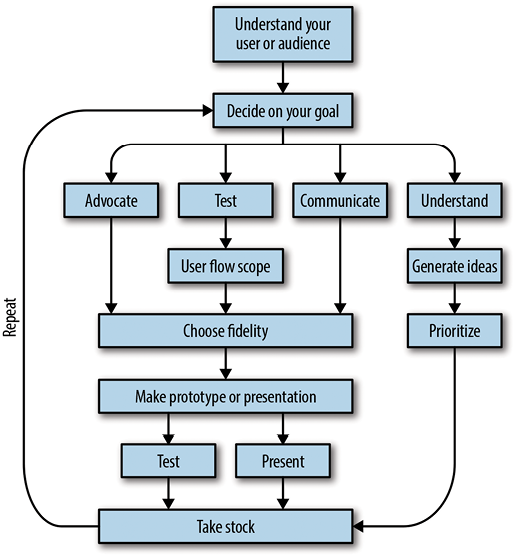[ 4 ]
The Process of Prototyping
Your prototyping process will take a slightly different path depending on the purpose for each prototype, and the process can vary depending on your goals, audience, and assumptions (Figure 4-1).

Figure 4-1
The process of prototyping depends on your goals, audience, and assumptions
To choose the proper process to follow, use these guidelines.
- Are you trying out prototyping, or don’t know what to do first? Try making a “minimum viable prototype.”
- Is your purpose to generate lots of different solutions for a problem? Then your process will be focused on exploration.
- Will you use the prototype to communicate or advocate for a certain direction? Then you need to concentrate on your specific audience.
- Do you have a question or assumption to test? Your process will be focused on that assumption.
Establishing the goal and focus of your process will ground your prototype, and limit the scope so that it doesn’t get too difficult to make.
Minimum Viable Prototype
If you don’t know where to start, you have limited time, or you want to try out prototyping before applying it to your work, use this process as a guide. A minimum viable prototype is the least amount of effort and a generalized approach to building a prototype. It will be the first step to becoming more comfortable with incorporating prototyping into your day-to-day work.
Step 1: Establish ...
Get Prototyping for Designers now with the O’Reilly learning platform.
O’Reilly members experience books, live events, courses curated by job role, and more from O’Reilly and nearly 200 top publishers.

